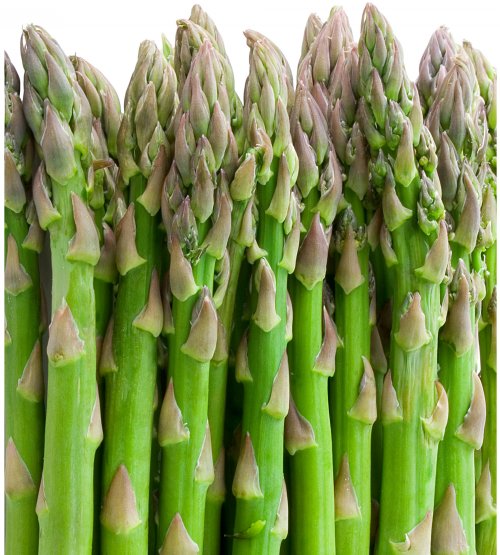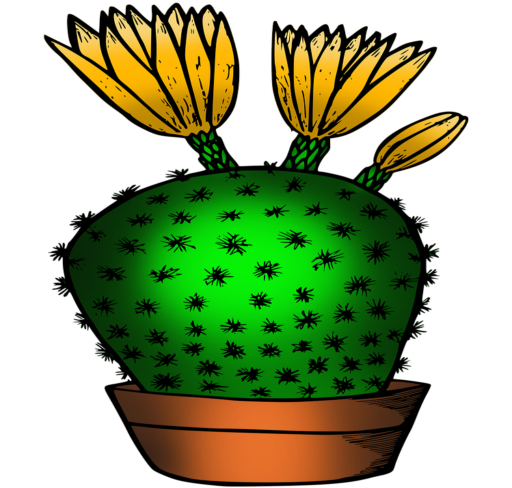
Planting Low Hot Desert
Plant Asparagus crowns into prepared beds from January 12 – January 27, after the soil temperature reaches 50 degrees F. Optimum productivity occurs at 75 to 85 degrees F in the day and 55 to 66 degrees F at night.
Planting Middle Desert
Plant crowns into prepared beds from March 27 – April 11, when the soil temperature reaches 50 degrees F.
Planting High Desert
Plant crowns into prepared beds from Mar 2 – Mar 17, once the soil temperature reaches 50 degrees F.
Asparagus is grown from 1-year-old plants or “crowns,” which are planted in early spring as soon as the soil can be worked. Asparagus plants take three growing periods to reach full production. An asparagus planting will provide plentiful harvests for fifteen to twenty years. Allow fifteen to twenty plants per person (20 to 30 feet of row).
Asparagus is a perennial vegetable, so you just plant them once and enjoy season after season of succulent spears. Seeds can be started indoors in spring for transplanting out around last frost. Bare roots can be planted as soon as they arrive in spring. Rooted plants are great for fall and should be planted 4-6 weeks before first fall frost. In 2 years, you’ll have a light crop and a regular crop thereafter. Long after harvest, the graceful, feathery green foliage is still attractive.
How to Plant
Asparagus may be grown from seed sown early indoors and transplanted outside after frost, from seed sown directly in the garden, from transplanted seedlings in fall or from year-old bare roots in spring.
Sowing Seed Indoors
Start asparagus seeds indoors 8-12 weeks before outdoor planting date in spring in peat pots, plastic pots or trays. At least 2 x 2 inch cells works best.
Sow seeds ½ inch deep in seed-starting formula.
Keep soil moist at 70-75 degrees F
Seedlings will emerge in 10-14 days
As soon as seedlings emerge, provide plenty of light. Most plants require a dark period to grow, do not leave lights on for 24 hours.
Seedlings should be 6-10 inches tall with 4-6 stems with several buds coming from the crown when they are ready to transplant outside.
Hardening the Plants
Before planting in the garden, seedling plants need to be “hardened off”. Accustom young plants to outdoor conditions by moving them to a sheltered place outside for a week. Be sure to protect them from wind and hot sun at first. If frost threatens at night, cover or bring containers indoors, then take them out again in the morning. This hardening off process toughens cell structure and reduces transplant shock and sun burn.
When selecting a site, keep in mind that asparagus is a perennial vegetable and the planting bed should not be disturbed. Early soil preparation is essential in order to establish a healthy asparagus bed.
Asparagus prefers full sun and a good organic well drained soil.
Space transplants 12 inches apart in a single or double row. Double rows should be 12-14 inches apart. Transplant before temperatures are 90 degrees F.
Asparagus Seeds – Mary Washington, Vegetab…
The Mary Washington is the classic asparagus. This variety is a high – yield perennial … [More]
Sowing Directly in the Garden
Direct sow seeds in spring when the soil is at least 60 degrees F.
When selecting a site, keep in mind that asparagus is a perennial vegetable and the planting bed should not be disturbed. Early soil preparation is essential in order to establish a healthy asparagus bed. Asparagus prefers full sun and a good organic well drained soil.
Prepare the soil by removing weeds and working organic matter into the top 6-8 inches of soil; then level and smooth.
Sow seeds evenly and thinly 2 inches apart, ¾ -1 inch deep
Firm soil lightly with your hand, water and keep evenly moist.
Seedlings will emerge in 10-14 days at 75 degrees F, a little longer if the soil is cooler.
Thin seedlings to about 12 inches apart when seedlings have at least two sets of leaves.

Planting Bare Roots in the Garden
When selecting a site, keep in mind that asparagus is a perennial vegetable and the planting bed should not be disturbed. Early soil preparation is essential in order to establish a healthy asparagus bed. Asparagus prefers full sun and a good organic well drained soil.
Dig trenches 6-8 inches deep and 12-15 inches wide. Space rows 2 ½ – 4 feet apart.
Set roots in the bottom of the trench, spacing crowns (centers) 18 inches apart in the row. Spread roots out as far as possible for best root establishment.
Cover roots with 2 inches of fine soil and water well.
Plants may take 6-8 weeks to emerge.
Continue adding soil as the tops grow up, about every three weeks, until the trench is full, which should be about midsummer when planted in early spring.
Planting Seedling Plants in the Garden
When selecting a site, keep in mind that asparagus is a perennial vegetable and the planting bed should not be disturbed. Early soil preparation is essential in order to establish a healthy asparagus bed. Asparagus prefers full sun and a good organic well drained soil.
Dig a hole for each plant large enough to amply accommodate the root ball.
Set plants in the bottom, spacing centers 18 inches apart in the row. Space rows 2 ½ – 4 feet apart.
Place the top of the root ball approximately ½ inch below the level of the surrounding soil.
Fill with soil to the top of the root ball.
Press soil down firmly and water.
Choosing a Spot to Cultivate Asparagus
Select a site in at least part sun. Asparagus will thrive in somewhat acid soil (pH of about 6.5) but will stand alkaline conditions up to 8.0 pH.
Planting Guidelines
Remove all weeds. Loosen the earth to a depth of 12 to 15 inches, then mix in a 3- to 4-inch layer of compost. Organize the bed by digging ditches 4 feet apart. The ditches should be 12 inches wide and 8 to 12 inches deep. Soak the crowns in water before planting. Pull a hoe along each side of the prepared trough to form a mound in the center running the length of the trough. Set the crowns 16 inches apart on the hills in the trench, draping the roots over the sides. Cover the crowns with a mix of two parts compost to three parts topsoil, burying the crowns 2 inches deep. Water the bed thoroughly. Once shoots have appeared add more soil to the trough.
Continuing Maintenance
First year: Weed the beds taking care not to disturb roots. Occasionally add more topsoil/compost around the developing shoots until the trench is filled. Then spread a 6- to 8-inch layer of mulch, such as hay or straw, around the base of the plants. Water regularly. Do not harvest any spears the first year.
Second year: Cultivate lightly by hand until the new spears are several inches tall. Keep the bed heavily mulched. Side-dress with compost in the spring and early fall. Cut down dead branches in late fall.
Third year and after: Begin harvesting.
Harvesting Asparagus
Begin harvesting in the third year. Harvest only those spears that are thicker than a pencil. Cut off the spears at ground level when they are 6 to 8 inches tall.
Asparagus grows best when growing conditions include high light intensity, warm days, cool nights, low relative humidity, and adequate soil moisture.
